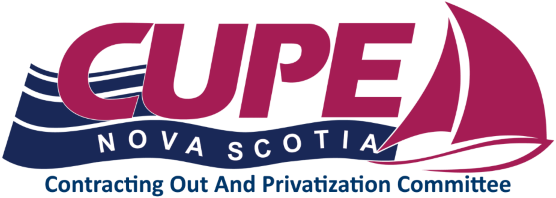Why It Never Works
What is Privatization?
The sale of a business or industry, that was owned or managed by the government, to the control of the private sector. It also involves the transfer of business and/or services, not just the sale of assets. The goal of privatization is profit maximization.
P3’s are the hot new form of privatization because they are advertised as a partnership but are just one step away from full private ownership. P3’s are designed and financed by private companies, but after the term of the contract they are transferred back to the government, after the private sector has made millions off tax payers.
The problem with privatization, you services get worse, companies cut corners, under invest, and profit is always number one.
- Your costs go up.
- Value for your money goes down as companies must make profits for shareholders.
- You cannot hold private companies accountable, because they are not democratically accountable to the public.
- Problems with outsourcing include last of transparency, manipulation of contracts and reluctance of governments, to terminate under performing providers.
- Staff are underlined. There are negative effects on employment and working conditions.
- Qualified staff are replaced with casual workers who have less rights and who are paid less.
- It is difficult to reverse, once services are privatized it is difficult to get them back into public hands. Also, we lose the pool of knowledge skills and experience public sector workers have acquired over the years.
Types of privatizations:
- Contracting: the most common form. The government enters into agreements with private vendors to provide service.
- Public private partnerships (P3’s): these are partnerships between public agencies and private service partners, they share the responsibility to provide government services.
- De-regulation: governments stop regulating services to allow private companies to begin offering the same services in order to encourage competition.
- Service shedding: governments greatly reduce, or completely stop offering services to allow private sector companies the opportunity to begin offering their resources.
- Shared issue privatization (SIP’s): this involves selling shares on the stock market.
Examples
P3 Schools – 1997
P3 Schools are schools built by private companies and then leased to the province on a long term basis, usually around 20 years. P3’s are now being thrown out as an option for governments to upgrade aging infrastructure all over the country. The P3 schools make for a great case study of how bad the P3 options are because now that the lease term is up we can see how much they really cost. To this point we as tax payers have already paid over $800 million for these schools and now that the P3 lease term is now up the bill to purchase the schools is now over 200 million, for schools that are 20 years old.
NDP calling on McNeil government to release P3 School Contracts
Nova Scotia Power – 1992
Power rates have gone through the roof, no more answering to the public, and executive salaries have increased drastically since the time of privatization.
Liberal privatization plans will cost Nova Scotians
How to fight
Privatization is something that affects everyone Union members, Tax payers, and Citizens in general. When the government plans to privatize a piece of our public services we all have to work together and tell the government we want our services to stay public!
If there is talk of privatization in your workplace please contact a member of the committee so we can get the information out to the other locals to spread the word
Information Picket/Rally: Time to Stop the Privatization of Nova Scotia’s Registries.
Liberal privatization plans will cost Nova Scotians
